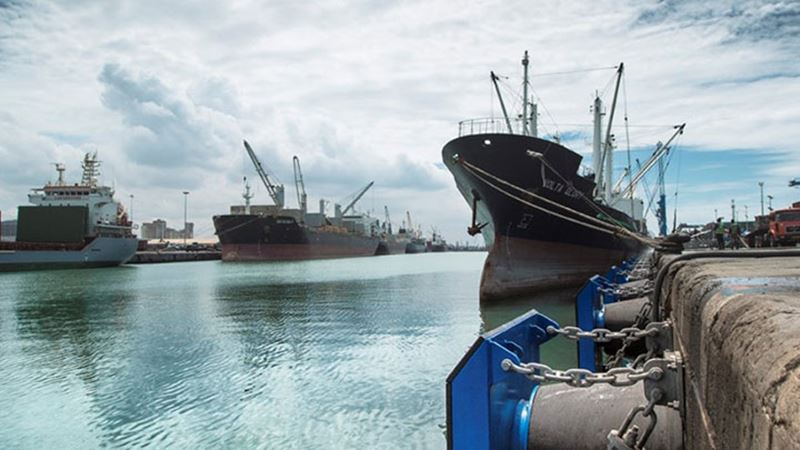Trelleborg welcomes piancs plans for the evolution of fender best practice

Date: 23.07.18
Trelleborg’s marine systems operation welcomes PIANC’s announcement that it will establish a new Working Group (MarCom WG 211), which will consult with a number of leading fender suppliers, including Trelleborg, with the objective of updating its 2002 Guidelines for the Design of Fender Systems – marking a significant step towards industry-wide fender best practice.
These changes will include updated guidance on the design, manufacture and testing of fender systems, including both the rubber element of the system and associated components. The group will also review guidelines for durability, maintenance and repair of fender systems and the implications of automated mooring systems on fender design. As such, we relish the discussion of our research into rubber compound composition, velocity and temperature factors, manufacturing methods and testing.
Additionally, while PIANC is undoubtedly an important standard bearer for quality and performance, the updated guidelines will seek to reiterate that PIANC has no mandate to nor intention of enforcing standards across the industry. Recognizing that this lack of enforcement has seen a number of suppliers misuse the term ‘PIANC certification’, with some even claiming ‘PIANC approval’ (which does not exist), the updated guidelines will see a stricter line on the use of its name.
Richard Hepworth, President, Trelleborg’s marine systems operation, commented: “Ports need to have the confidence that their equipment is fit for purpose to fully protect terminals and berthing vessels, while keeping the port running safely and efficiently. However, as the economy has become increasingly global, it is more difficult to be fully confident in the performance and provenance of some products. Some unscrupulous suppliers are taking the opportunity to undercut reputable fender manufacturers. We have been working for years to prevent this.
“Since the establishment of PIANC’s 2002 Guidelines for the Design of Fender Systems there has been a number of evolutions in vessel design and industry applications, as well as advances in the design of fender systems themselves. As a result, Trelleborg has spent the last eight years relentlessly lobbying for updates to the guidelines with substantial investment in research highlighting the importance of understanding how ingredients for fenders are selected, how they are manufactured and how they are tested.
“Therefore it’s safe to say that we at Trelleborg look forward to working closely with PIANC to ensure the new guidelines, when they become available, reflect the needs of a changing industry – one which has a number of opportunities to thrive through the use of smart technologies. We’ve long supported the work of PIANC and our contribution to the forthcoming update to PIANC’s guidelines is not only the latest in a long history of collaborative work, but a fitting reward for the near decade of our tireless efforts to driving up standards for fender best practice.”
Additionally, while PIANC is undoubtedly an important standard bearer for quality and performance, the updated guidelines will seek to reiterate that PIANC has no mandate to nor intention of enforcing standards across the industry. Recognizing that this lack of enforcement has seen a number of suppliers misuse the term ‘PIANC certification’, with some even claiming ‘PIANC approval’ (which does not exist), the updated guidelines will see a stricter line on the use of its name.
Richard Hepworth, President, Trelleborg’s marine systems operation, commented: “Ports need to have the confidence that their equipment is fit for purpose to fully protect terminals and berthing vessels, while keeping the port running safely and efficiently. However, as the economy has become increasingly global, it is more difficult to be fully confident in the performance and provenance of some products. Some unscrupulous suppliers are taking the opportunity to undercut reputable fender manufacturers. We have been working for years to prevent this.
“Since the establishment of PIANC’s 2002 Guidelines for the Design of Fender Systems there has been a number of evolutions in vessel design and industry applications, as well as advances in the design of fender systems themselves. As a result, Trelleborg has spent the last eight years relentlessly lobbying for updates to the guidelines with substantial investment in research highlighting the importance of understanding how ingredients for fenders are selected, how they are manufactured and how they are tested.
“Therefore it’s safe to say that we at Trelleborg look forward to working closely with PIANC to ensure the new guidelines, when they become available, reflect the needs of a changing industry – one which has a number of opportunities to thrive through the use of smart technologies. We’ve long supported the work of PIANC and our contribution to the forthcoming update to PIANC’s guidelines is not only the latest in a long history of collaborative work, but a fitting reward for the near decade of our tireless efforts to driving up standards for fender best practice.”
For more information on the update of PIANC’s 2002 guidelines, visit: http://www.pianc.org/
For more information, please go to:
www.trelleborg.com/marine-and-infrastructure
www.trelleborg.com/marine-and-infrastructure
Press Service:
This press release is available for download in English. If you reproduce information from this release please give contact details as:
www.trelleborg.com
E-mail: news@trelleborg.com
English [doc]